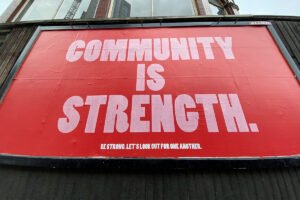{source}[[span style="float: right; border-left: 1px solid gray; border-bottom: 1px solid gray; margin: 0pt 0pt 5px 5px; padding: 0pt 0pt 0pt 5px;width:250px;"]][[h3]]Related Articles[[/h3]][[br /]]{loadposition related}[[/span]]{/source}
July 25, 2010; Source: The Annapolis Capital | It is a little like Henry Potter (Lionel Barrymore) complaining about George Bailey’s (James Stewart’s) Savings and Loan in the fictitous Bedford Falls. Bankers in the Maryland area are concerned about what they say is an increased focus on small business lending by credit unions—their nonprofit status giving the them an unfair advantage. We don’t know of too many credit unions that have been major competition for the Bank of America or Wells Fargo, however.
Think of credit unions like cooperatives. Unlike banks, credit union managers have to respond not to stockholders, but credit union members. Fees aren’t as high as they are with banks, interest rates on loans are lower, interest rates on savings accounts are higher, and credit unions have not been associated with the speculative subprime lending that led to the collapse of the financial markets in 2008.
A major difference between nonprofit credit unions and for-profit banks is that credit unions have typically avoided commercial lending, restricted by law to no more than 12.25 percent of their assets, but legislation by Congressmen Paul Kanjorski (D-PA) and Ed Royce (R-CA) would allow them to increase that proportion to 25 percent.
Sign up for our free newsletters
Subscribe to NPQ's newsletters to have our top stories delivered directly to your inbox.
By signing up, you agree to our privacy policy and terms of use, and to receive messages from NPQ and our partners.
The U.S. Coast Guard Credit Union dates back to 1940 when seven employees at the Curtis Bay Coast Guard Yard began their institution with a combined deposit of $70. It now has 5,000 members and $33 million in assets, having opened its membership beyond Coast Guard employees to people who “work, worship or attend school” in northern Anne Arundel County and in south Baltimore.
The banks say that the credit unions’ nonprofit status constitutes an unfair competitive advantage. The variety of things banks can do with their assets—plus raising money from stockholders—assures for-profit banks that they are unlikely to lose their foothold in the economy to these relatively tiny, community-based nonprofits. In fact, the next time you walk into a branch of your local behemoth bank and the staff all give you hearty greetings and statements of “welcome to such-and-such bank,” realize that the bank is simply emulating the personal attention and friendly service that have long characterized the behavior of local credit unions. The feeling of community ownership is why the citizens of Bedford Falls stopped the run on the Bailey S&L in “It’s a Wonderful Life,” and why people belong to nonprofit credit unions.—Rick Cohen











